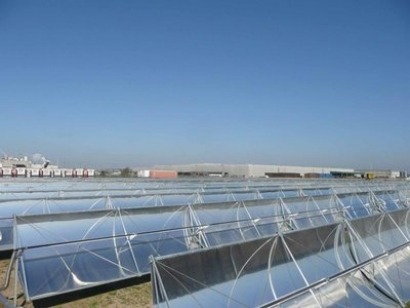
The project will be located in Chile’s Atacama Desert, a region that has the highest solar radiation concentrations in the world. It will be the first solar-thermal plant for direct electricity production in South America.
Abengoa won the contract following an international tender launched by the Chilean Ministry of Energy and Corfo to construct the first Concentrated Solar Power plant in Latin America. The project will receive direct subsidies from the Chilean Government and the European Union (EU) and financing from the Inter-American Development Bank, KFW Kreditanstalt für Wiederaufbau, the Clean Technology Fund and Canadian Fund.
The solar plant will incorporate a pioneering thermal storage system with 17.5 hours of storage that has been designed and developed by Abengoa. This will make the technology highly manageable and able to respond to all periods of electricity demand 24 hours a day. Located in the commune of María Elena in the Antofagasta region, northern Chile, the project forms part of Chile’s national renewable energy program, intended to provide Chile with a cleaner energy future, while also promoting its economic development and reducing its dependency on coal and natural gas.
Chile has set a target to produce 20 percent of its electricity from clean energy sources by 2025. The Atacama facility will prevent the emission of around 643,000 tons of carbon dioxide per year and its construction will act as a catalyst for regional socio-economic development, creating a large number of direct and indirect jobs in construction, development, commissioning and operation in addition to a network of services for promoting economic growth in the country. Construction of the project is due to start in the second half of 2014.
Abengoa currently has 1,223 MW of installed capacity in commercial operation in Chile, 430 MW under construction and 320 MW in pre-construction, including both solar-thermal and photovoltaic technology. It is the only company in the world to construct and operate solar-thermal plants using both tower and parabolic trough technologies.
For additional information:

